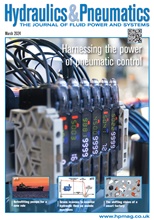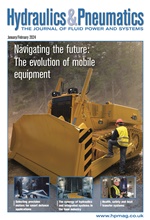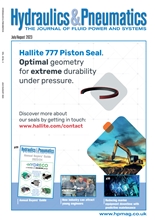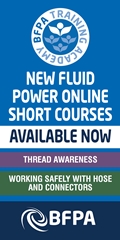- Home » Editorial » Hydraulics
The critical performance characteristics of a pressure relief valve

Reseat of shut off pressure
A pressure relief valve’s reseat pressure is the pressure at which the valve closes when decreasing from the open state. The shut off pressure is the pressure at which the valve completely shuts off and no longer allows excessive internal leakage past the valve’s seal. These pressures are typically defined as minimum pressures. These are the lowest pressures that the valve is allowed to close or stop leaking and implies the actual reseat or shut off will occur at a pressure between the relief flow pressure and the minimum as pressure decreases. The crack or overpressure points protect the vessel or system, while correctly specifying the reseat or shut off pressure ensures continued normal operation of the system. Like the cracking pressure, if a reseat or shut off pressure is too low, there is a risk of improper valve operation or a decrease in system efficiency
Leakage
Valve leakage can be broken down into two categories: external and internal. External leakage refers to fluid flowing around the exterior of the valve body, which may include threads, O-ring seals, or other external features. Internal leakage is any fluid flow through the valve’s body while the valve is in its closed position. Leakage allowances can be influenced by variables such as whether it is an open or closed system, total system volume, fluid transfer capability, and desired system efficiency.
Materials
A pressure relief valve is comprised of several sub-components. The materials of each component must be able to withstand the various forces that will be applied to them during the valve’s operating life. This includes the pressures applied internally and externally to the valve, along with the associated pressure rise rates. Materials must also be compatible with their environment including external fluids, temperatures, and the system fluid that will relieve through the relief valve. It is possible that a valve may be subject to extreme humidity or be incorporated in a system submerged in other liquids or gases. The valve’s materials should be considered when determining how the valve will be installed into the system. Failure to consider material compatibility may create issues related to thermal expansion and corrosion
Envelope
The envelope is an important factor to consider when selecting a relief valve. The first consideration is the location of the valve within the system and the desired flow path for the relieved fluid. The system may require the relief valve to be located within a specific area, limiting external dimensions or overall size. The location may also dictate the flow path of the relieved fluid based on existing lines. The envelope must also account for installation, retention, and maintenance requirements. For example, some valves incorporate threaded fitting ends, while others are installed directly into manifold housings. Next, determine whether the installation must be permanent or removable. Finally, evaluate if the valve may be used in a system in which weight is a factor, such as a portable system or when fuel efficiency is paramount.
An engineer’s guide to selecting a pressure relief valve The above is an extract from The Lee Company’s publication: An engineer’s guide to selecting a pressure relief valve. The full publication can be downloaded free of charge from the company’s website: https://www.theleeco.com/resources/ebo oks/an-engineers-guide-to-selecting-apressure-relief-valve/
https://www.linkedin.com/company/the-lee-company/
https://www.facebook.com/TheLeeCo
-
Smart Manufacturing & Engineering Week
05 - 06 June, 2024
NEC, Birmingham -
HILLHEAD 2024
25 June, 2024, 9:00 - 27 June, 2024, 16:00
Hillhead Quarry, Buxton, Derbyshire UK










